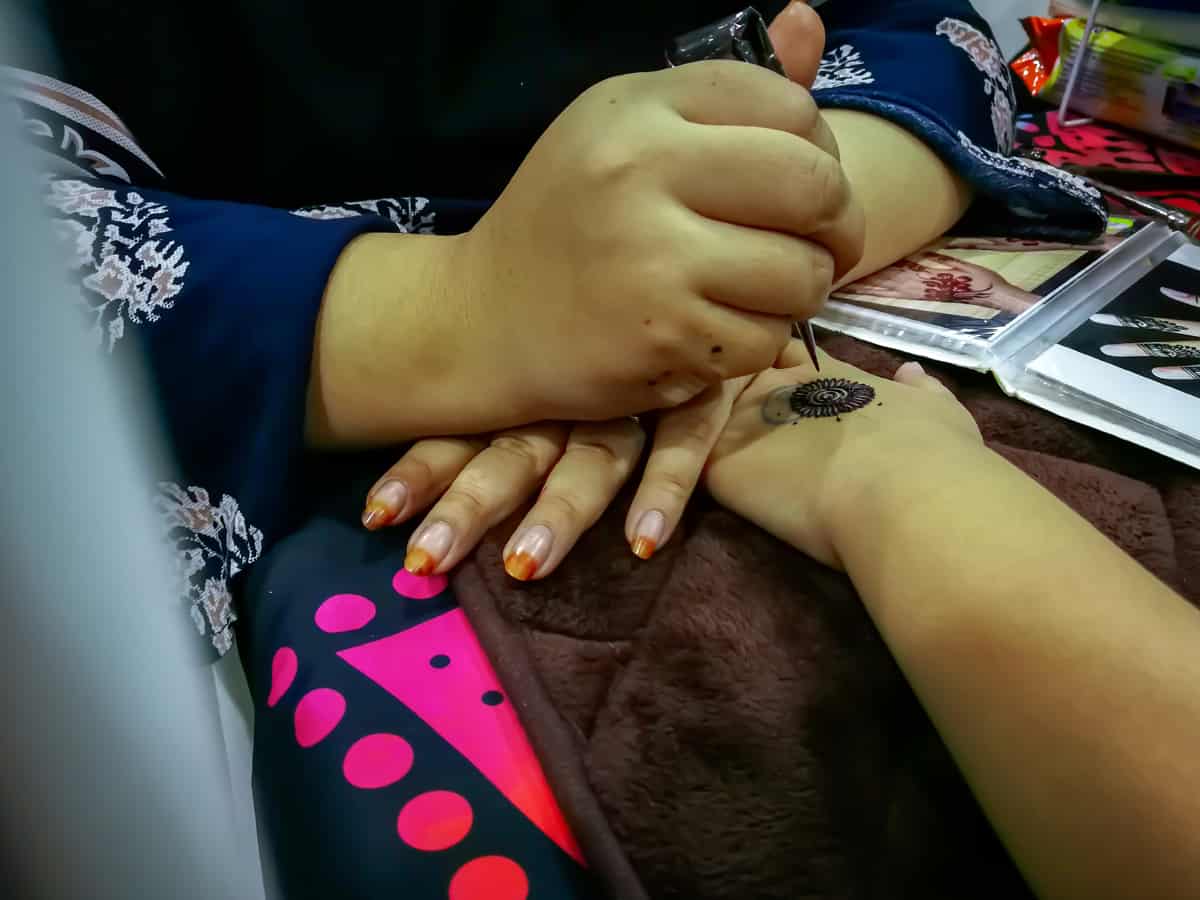Nihad Amani
Hyderabad: The big fat Indian wedding is a collection of colourful celebrations like the rokha (a kind of engagement), mehendi, sangeet, maanjhe, shaadi, walima (reception). But the festivities do not end there. They continue at least for five more weeks.
And the one thing that is common in all these occasions is mehndi design.
These numerous occasions are symbolic of the Indian melting pot of religions and cultures that practice diverse wedding rituals. Although in almost every nook and corner of the nation, the mehendi ceremony is a mainstay during the grand nuptials. On this specific occasion, the bride-to-be dons a green and yellow dress and lends her hands to the henna artist. As the artist’s exquisite designs grace’s the bride’s hands girls giggling, singing and dancing only add to the celebratory mood. However, there was a time when this ritual of applying mehendi was more of a traditional family custom . With increase in demand and celebrations it slowly gathered a commercial angle.
Today, henna artists are not just applying mehendi for the sake of love and joy, but also as a means to livelihood. Now the mehendi artists have turned to commercial means to attract more clients. The names are mundane as well as imaginative. Mina Mehendi, Khanam Mehendi Studios, Fatimah Khan and Sadia Arts are some of the popular names that are in the business of making brides look more beautiful on their big day.

Earlier, preparing was a tedious process. First leaves had to picked from the mehendi trees, dry them and later grind them to paste. That was all done by the elderly women in the family like a grandmother or an aunty.
But the things have changed. These are even the days of ‘instant mehendi.’
But cones are the most commonly used tools to apply mehendi design. And the cones are aplenty in the market. Moreover, the artists also supply their own cones for that he or she may charge an amount between Rs. 250 and Rs. 500 each. Interestingly enough, henna was once applied on the groom as well.

Besides the commercialization and the increasingly impersonal aspect of this ritual, mehendi is still considered both an omen and a sign of beauty. Many believe that a good henna color can be attributed to the more love from the groom. Writing the groom’s name in the design is said to be the first game a couple plays after the wedding.
Although compared to bygone times, applying the mehendi was about sharing love and spending time with family members. Today it is an art of excellence and perfection for which families must pay Rs. 3,000 and Rs. 7,000 or even more. In spite of such commoditisation of a tradition, it provides employment avenues to females.
The costs of different designs vary according to the occasion — bridal and non-bridal — as well as the length of the design. Such designs are no longer confined to Arabic or Indian designs but many more have come up like Rajasthani, Kafif, Pakistani, Western, Moroccan and other designs are also in vogue.
Plus, modern mehendi artists have their own signature patterns.
As these artists’ businesses are expanding their brands, they are also taking to social media platforms like Instagram and Facebook to advertise to and communicate with their clients.

